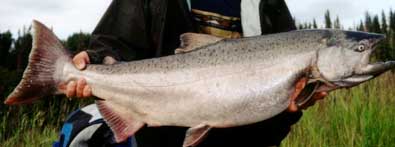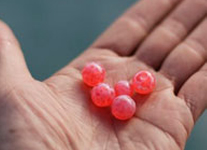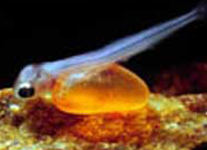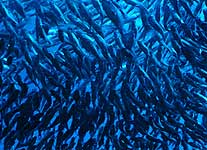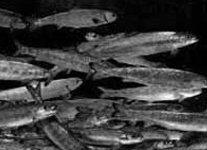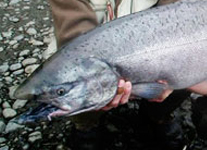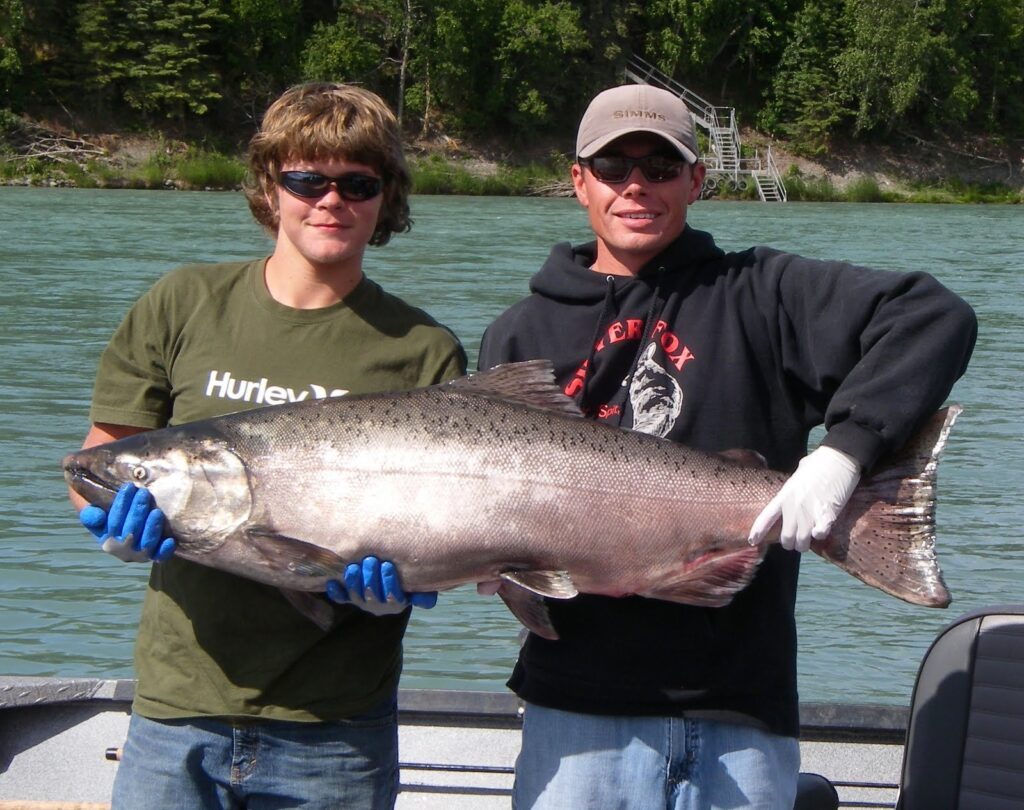Scientific Name:
Oncorhyncus tshawytscha, from the Greek words onkos (hook), rynchos (nose) and tshawytscha (the common name for the species in Siberia and Alaska).
Also known as:
Chinook Salmon
Found:
From Kotzebue Sound, Alaska, to Santa Barbara, California.
Appearance:
King Salmon have a blueish-green back with silvery sides and a white belly and black spots on the back and tail and silver splashes in the tail. King salmon range from 25-126 pounds and are 5-7 years of age. The flesh of the King salmon is highly prized for its rich salmon flavor and firm flesh. The natural numbers of wild King salmon are quite low compared to the other species of salmon. But is being managed to maintain the historical escapement goals and is in no way endangered in Alaska. Is both commercially harvested and is also a prize sport fish.
Habitat:
Freshwater streams and estuaries provide important habitat for king salmon. They feed on terrestrial and aquatic insects, amphipods, and other crustaceans while young, and primarily on other fish when older. Eggs are laid in deeper water with larger gravel and need cool water and good water flow (to supply oxygen) to survive. Estuaries and their associated wetlands provide vital nursery areas for the chinook prior to its departure to the open ocean. Wetlands not only help buffer the estuary from silt and pollutants but also provide important feeding and hiding areas.



